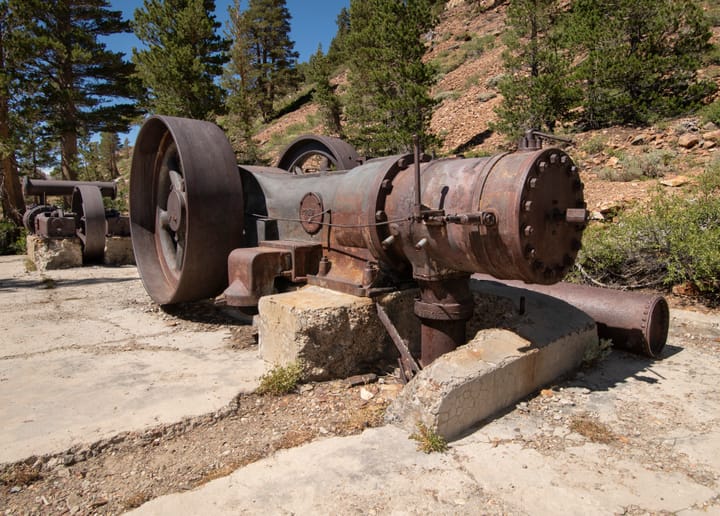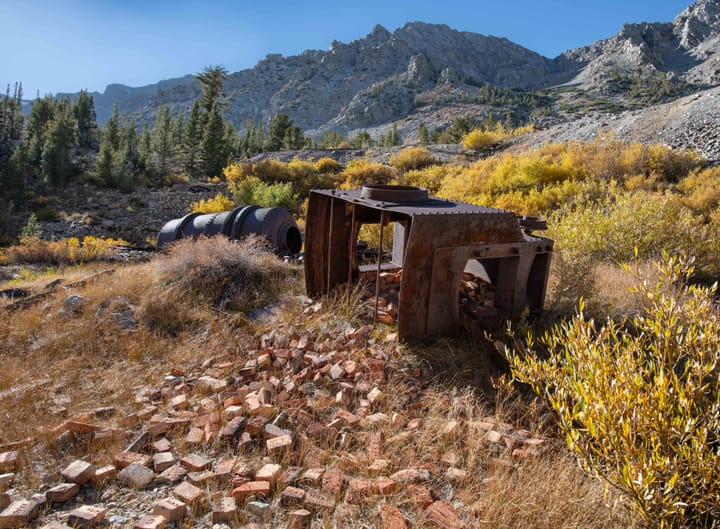Read next

Mammoth Consolidated Mine
Mammoth Lakes is one of the Eastern Sierra's most popular recreation destinations, prized for its excellent skiing in the winter, ample hiking opportunities in the summer, and world-class scenery. Few visitors today realize that the town's roots trace back to a late-1800s gold mining boom, which

Chemung Mine
The Chemung Mine tells two stories, and neither one ends well. The first is about phenomenally rich gold ore that someone discovered in 1909 – ore so valuable it ran "several hundred dollars per ton" in an era when that meant real money. The second story is about a

May Lundy Mine
Just northwest of Mono Lake lies Lundy Canyon, home to a Mono County campground, a large lake, and a small resort with a few cabins and campsites. Most visitors today come for the fishing, hiking, and fall color, probably unaware that this quiet area was once home to a booming
